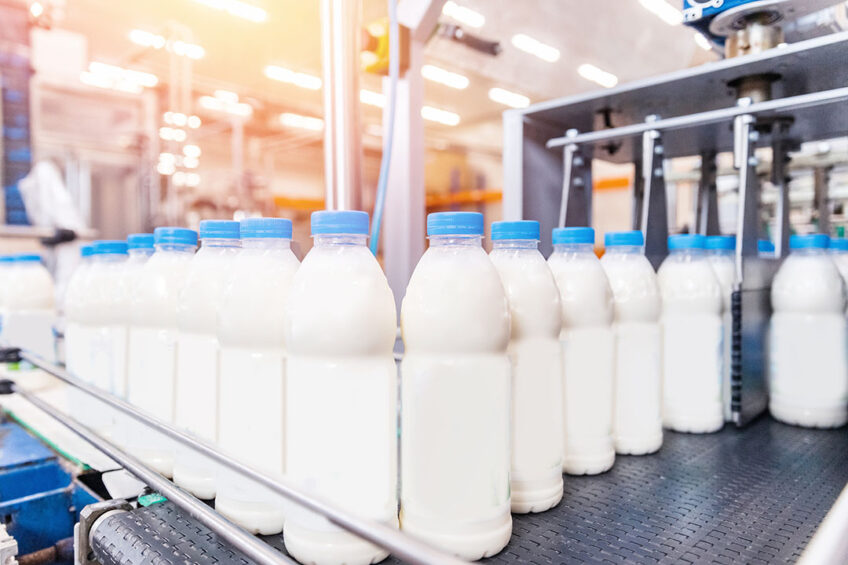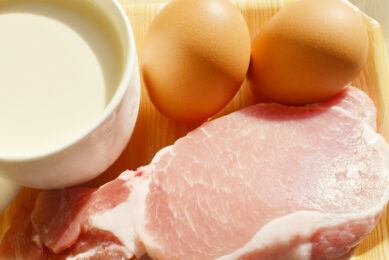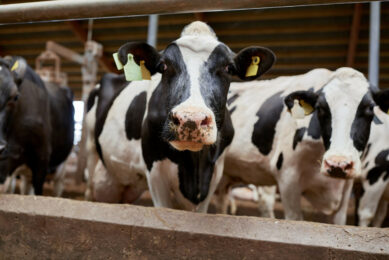Post-Brexit trade concerns: Antibiotics in imported dairy

Moves by the UK government to introduce new trade deals post Brexit have sparked concerns about the use of antibiotics in imported dairy and meat products.
In the past, a large majority of the UK’s diary and meat imports came from the European Union, but the new trade deals being negotiated with Australia, New Zealand, Canada and the United States, have raised concerns about antibiotic standards.
Pressure group ‘Alliance to Save our Antibiotics‘ has released a briefing paper which highlighted the following:
• Per tonne of livestock unit, total farm antibiotic use in both the US and Canada is about 5 times higher than UK livestock.
• Farm antibiotic sales increased by 9% in 2018 compared to 2017 while use in Canada in the same period rose by 6%. The US uses a variety of antibiotics as growth promoters, including bacitracin, an antibiotic used in human medicine which the World Health Organisation classifies as medically important. The US also uses carbadox and bambermycin as growth promoters – none of these are allowed to be used in UK or EU livestock.
• Farm antibiotic sales increased in Australia in 2010 (the most recent year for which data is available) by 11% compared with 2008, and in New Zealand by 3% in 2017 compared to 2016. Australia permits the use of antibiotics avilamycin, bambermycin and olaquindox – none of these are permitted in the EU or the UK.
In January 2022, the EU will ban the importation of all meat and dairy produced with antibiotic growth promoters, but the report says it is still not clear whether the UK will implement this legislation.
In contrast, farm antibiotic use in the EU has fallen in recent years – by 17% between 2016 and 2018 while UK farm antibiotic sales fell by nearly 50% between 2014 and 2018.
In January 2022, the EU will ban the importation of all meat and dairy produced with antibiotic growth promoters, but the report says it is still not clear whether the UK will implement this legislation.
“To prevent the importation of meat and dairy produced to low standards and with routine antibiotic use, the UK must maintain its ban on the importation of beef produced with growth hormones and introduce a ban on the importation of all foods produced with antibiotic growth promoters. Furthermore, in order to help achieve lower and more responsible farm antibiotic use, it should implement the EU ban on routine antibiotic use and on preventative group treatments and phase out the importation of meat and dairy produced with these types of treatments,” the report noted.
Responsible use of Medicines in Agriculture
The report was released on the same day as the Responsible Use of Medicines in Agriculture (RUMA) 2021 conference and was discussed by speakers. Sarah Bradbury, Tesco quality director, said the company was part of the Food Industry Initiative on Antimicrobials (FIIA) and that it had the same antibiotics policy for imports of meat and dairy from Italy and Spain as it had with UK producers.
Stuart Roberts, National Farmers Union (NFU) deputy president, said the industry needed to be on top of its game and ensure that it stood together to take the high ground on antibiotic use and standards as well as animal welfare stockmanship and environmental standards.
Tim Smith, chairman of Cranswick plc, said the progress made in the UK on reducing antibiotic use in agriculture since 2016 on a voluntary basis had been outstanding and it was vital there should be no back-sliding with pressure continued to be levied on the UK government.
Ian Wright, Food & Drink Federation CE, said it was important to recognise that shoppers might be tempted by other standards with inflation set to rise over the next few months. He urged the industry to be vigilant.
Dairy sector stats
Some of the actions being taken in the UK dairy sector to reduce antibiotic use, as highlighted in this month’s annual Responsible Use of Medicines in Agriculture Alliance (RUMA) report, are the following:
• Best practice training: Under the Red Tractor farm assurance scheme, at least 1 person on each dairy farm responsible for administering medicines must have undertaken an approved medicines training course. Last year, 77% of dairy farmers complied, increasing from 46.5% in 2019. A further increase is expected in 2021. The Animal Medicines Best Practice online farmer training has now been accessed by 561 dairy farmers since its launch in 2018.
• Farmer and vet herd health plan: In 2020, the compliance rate against the Red Tractor requirement for a livestock health plan was 87.7% for dairy members participating in the scheme.
• Reduced non-compliance for bovine viral diarrhoea: Under the Red Tractor assurance scheme, there is a requirement that members document and implement the bovine viral diarrhiea eradication plan in their health plans. The compliance rate for 2020 was 96.1%.
• Sales of lactating and dry cow tubes in dairy: The 3-year rolling average is 0.63 and 0.57 which are below the 3-year rolling baseline average.
• Fall in dairy lameness and mastitis from various 2019 indicators: Data has been collected from 79 ‘Sentinel’ herds across the UK by Quality Milk Management Services and the University of Nottingham, funded by AHDB Diary and the Dairy Research Partnership. Between 2012 and 2020 there was a 32% reduction in mean clinical mastitis rate from 44.1 to 30.2 cases per 100 cows per year.
However, at present, due to lack of data, RUMA is unable to provide information as to whether there has been a 15% mg/kg fall in antibiotic use in dairy herds or calf rearing units, or the number of calves treated, or statistics on use of the highest priority antibiotics.
Join 13,000+ subscribers
Subscribe to our newsletter to stay updated about all the need-to-know content in the dairy sector, two times a week.










